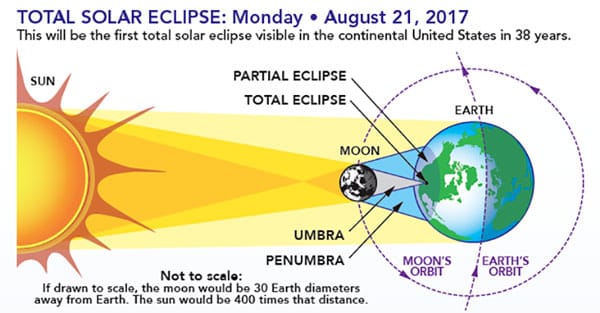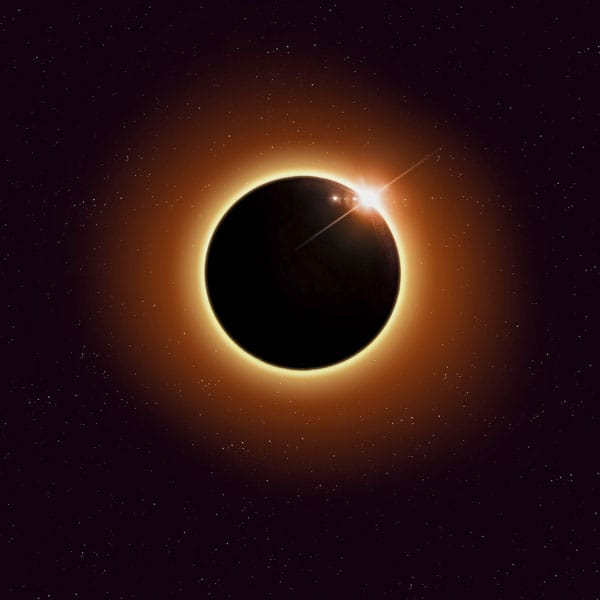Are you ready for the August eclipse?

Diagram (from Nasa.gov) showing the Earth-sun-moon geometry of a total solar eclipse.

By Lynne Marsala Basche; courtesy photos
On Monday, August 21, enthusiastic skywatchers in North America are in for a treat; a total solar eclipse. During a solar eclipse, the moon slowly passes between the Earth and the sun, blocking all or part of the sun. The last time the contiguous U.S. witnessed a total solar eclipse was in 1979.
Colorado will not see a total solar eclipse, but Douglas County viewers will still be able to enjoy the magnificent sight of a partial solar eclipse. A partial solar eclipse occurs when the alignment of the moon only blocks a portion of the sun. Locally, the eclipse is expected to begin at 10:23 a.m. with the most pronounced view of the obscuring of light at 11:47 a.m. The eclipse will be over at 1:15 p.m. after a duration of 2 hours and 52 minutes.
Remember, looking directly at the sun, even when it is partially covered by the moon, can cause serious eye damage. Be sure to wear proper eye protection, and binoculars or a telescope will not shield eyes from damage. Visit eclipse2017.nasa.gov/safety for other safety tips, including how to make a pinhole projector or camera, which allows gazers to watch the progress of the eclipse indirectly as only a projection of the sun and the moon are seen by the viewer.
As long as the weather cooperates, the upcoming eclipse is sure to delight skywatchers. Where will you be?
